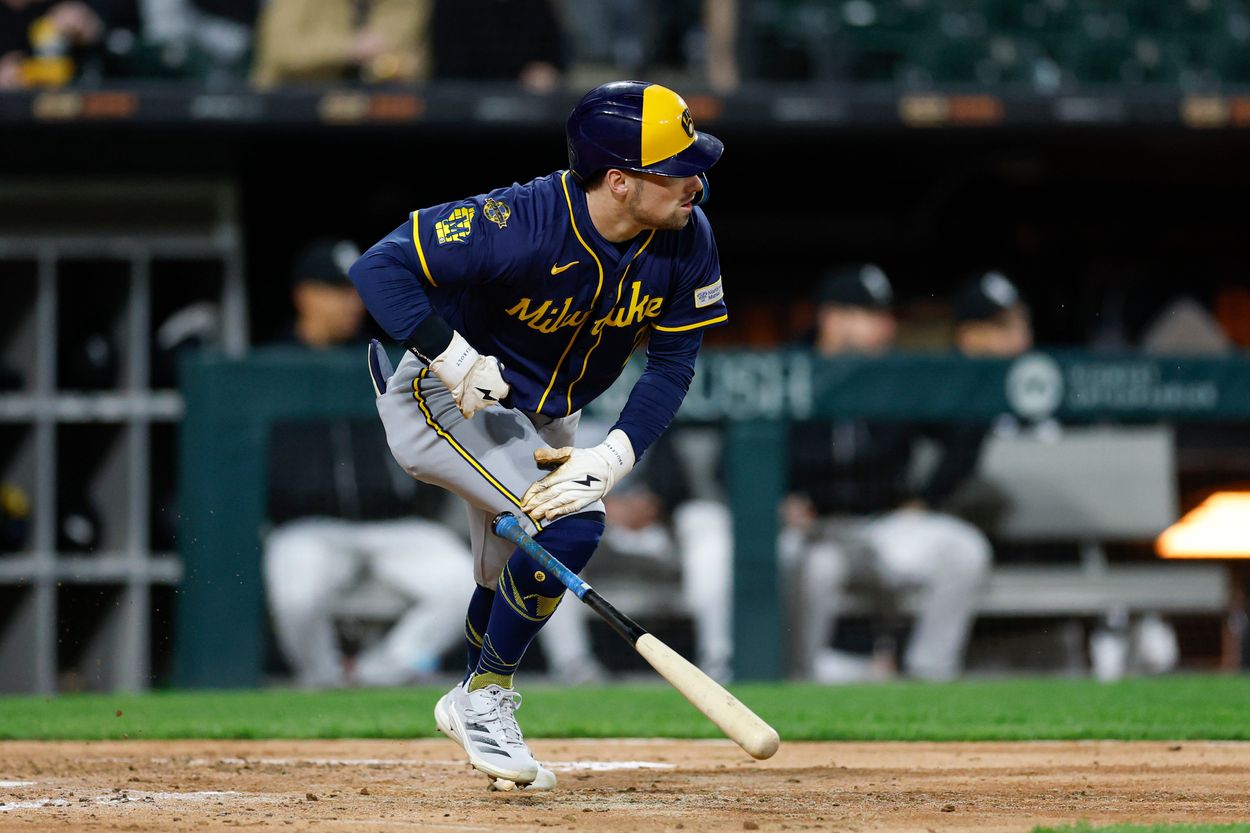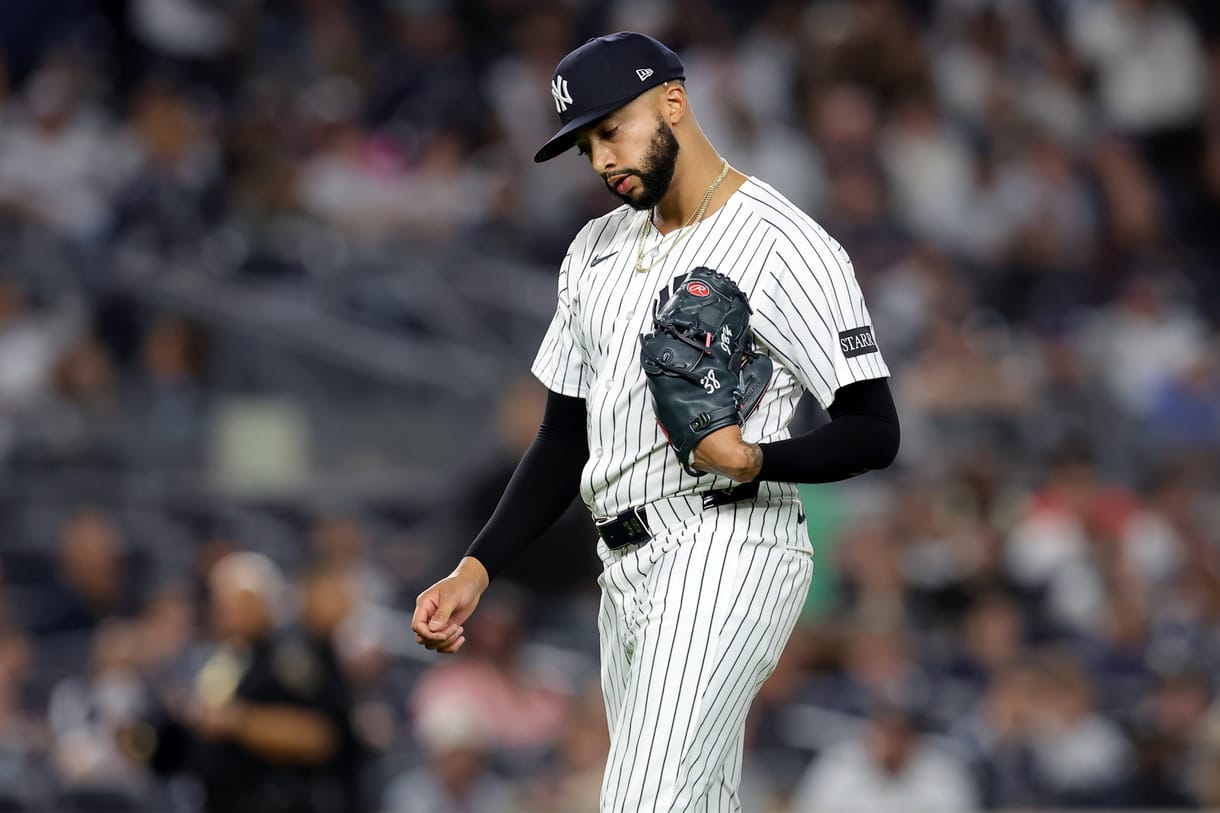
Every trade comes with risk.
But when the New York Yankees sent Nestor Cortes and infield prospect Caleb Durbin to Milwaukee for closer Devin Williams, they bet big.
They saw a chance to upgrade the ninth inning and went all in, hoping Williams would stabilize the back end.
So far, the result feels like a poker hand gone sideways — good intentions, poor timing, and a cost they’re now feeling.
Williams has been shaky, sporting a 9.00 ERA over 10 innings, struggling with command and watching his strikeouts sharply decline.
And the worst part? The players they gave up are starting to thrive elsewhere, offering production the Yankees desperately need right now.

Caleb Durbin was more than just a throw-in
Durbin was viewed by many as a “sweetener” in the trade, a promising but undersized infield prospect without a clear role.
Yet everything he’s done since leaving the Yankees screams otherwise.
He’s hitting .263/.356/.395 with a 113 wRC+ across 12 games in Milwaukee, offering elite contact and plate discipline.
The most eye-popping stat? A minuscule 4.4% strikeout rate — rare even among seasoned big leaguers, let alone a rookie.
He’s not just surviving — he’s thriving with the bat and giving the Brewers real value at the top of the lineup.
Durbin profiles as a long-term leadoff hitter, something the Yankees currently lack amid inconsistent infield production and shifting roles.
A brutal case of bad timing in the Bronx
With Jazz Chisholm nursing an oblique injury, the Yankees suddenly have a hole at second base — one Durbin could’ve filled.
Instead, they’re leaning on unproven or underwhelming options like Oswald Peraza and Pablo Reyes, neither of whom offer Durbin’s bat-to-ball skills.
Even defensively, while Durbin has logged time at third base for the Brewers, his natural position remains second.
His numbers on defense are mixed, with -2 defensive runs saved and -2 outs above average, but he hasn’t made an error yet.
If the Yankees had kept him, they could’ve moved Chisholm back to third and slotted Durbin in at second.
That alignment could’ve shored up the infield while giving them more contact and consistency at the plate.

Nestor Cortes would’ve helped right now, too
Adding to the frustration is the fact that the Yankees also gave up Nestor Cortes, a reliable and cost-controlled starter.
With multiple injuries in the rotation, his presence would’ve been a huge boost during the early months of the season.
Instead, the Yankees are scrambling with patchwork arms and innings eaters, while Cortes provides stable innings for Milwaukee.
Trading a starter and a contact-oriented infielder for a struggling closer in a contract year is starting to look rough.
Especially when all three areas — rotation, bullpen, and infield — could’ve used those pieces today.
Betting on Williams still might pay off — but the cost is real
The Yankees haven’t closed the book on Williams yet.
If he rebounds, this trade may still serve its purpose in October when elite closers matter most.
But the price they paid — particularly in Durbin — is already being felt on a roster that needs depth and reliability.
Sometimes, the players you trade away hurt more than the ones you bring in, and this may be one of those times.
Popular Reading
Yankees’ top prospect continues to excite with excellent start in 2025
!function(){var g=window;g.googletag=g.googletag||{},g.googletag.cmd=g.googletag.cmd||[],g.googletag.cmd.push(function(){g.googletag.pubads().setTargeting(“has-featured-video”,”true”)})}();var _bp=_bp||[];_bp.push({“div”:”Brid_2111696″,”obj”:{“id”:”30505″,”width”:”1280″,”height”:”720″,”stickyDirection”:”below”,”video”:”2111696″,”poster”:”https://empiresportsmedia.com/wp-content/plugins/tpd-addons/blocks/featured-video/src/img/1×1-white.png”}});https://player.target-video.com/player/build/targetvideo.min.js